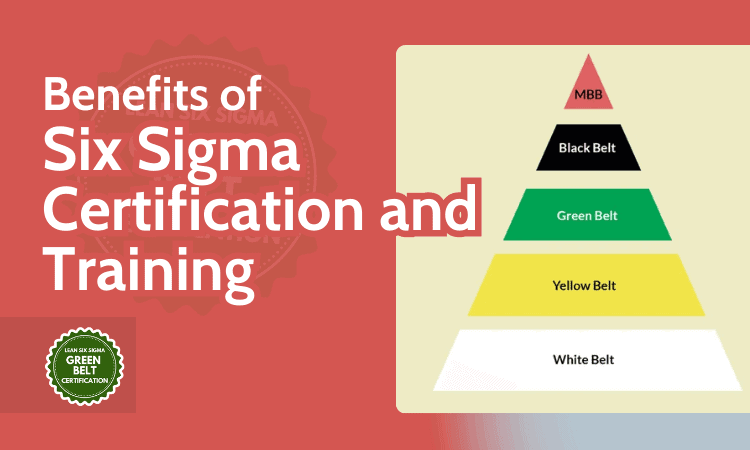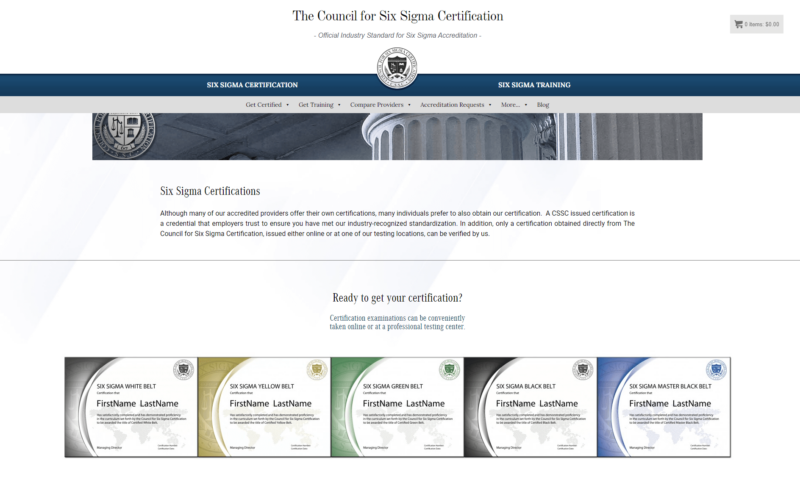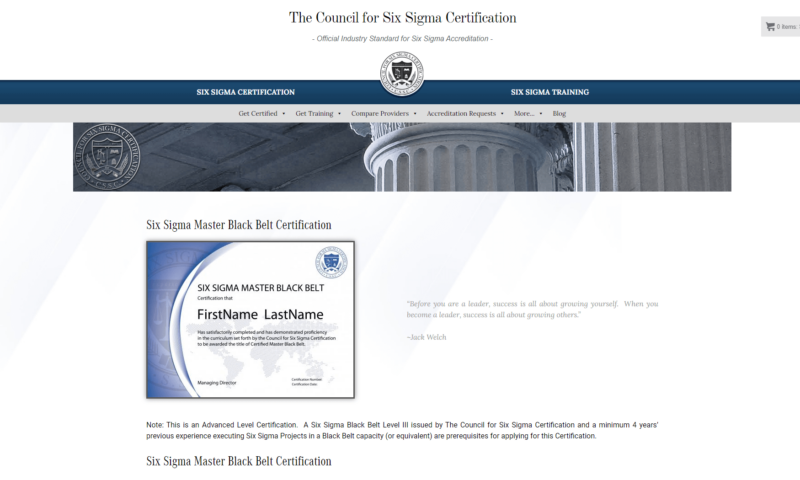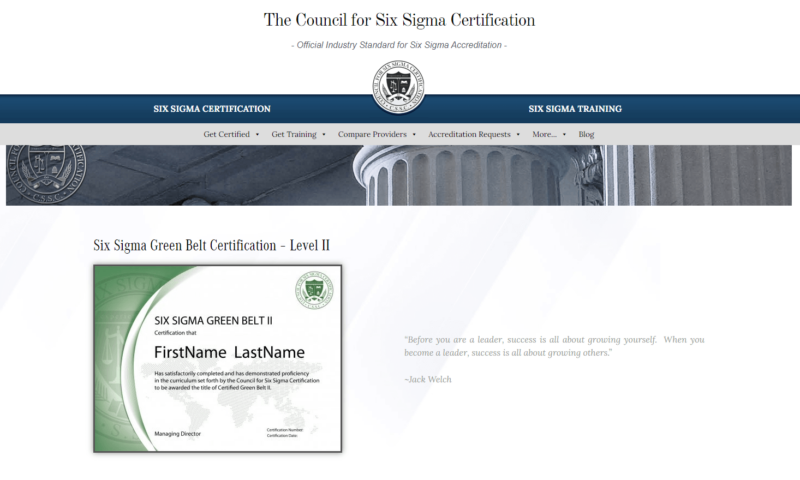
Why you can trust us
- 407 Cloud Software Products and Services Tested
- 3056 Annual Software Speed Tests
- 2400 plus Hours Usability Testing
Our team of experts thoroughly test each service, evaluating it for features, usability, security, value for money and more. Learn more about how we conduct our testing.
Key Takeaways: Benefits of Six Sigma
- Six Sigma can help organizations increase efficiency, eliminate production variations and improve process controls in any project across numerous industries.
- Six Sigma certifications, or belts, can help you show current and future employers that you have the knowledge and ability to lead teams, enhance efficiency and spearhead improvement efforts across every stage of the project life cycle.
- Six Sigma principles and philosophies can be applied to traditional and Agile project management methodologies such as Waterfall, Critical Path, Scrum, Kanban and more.
Facts & Expert Analysis About the Benefits of Six Sigma:
- Defect elimination: When used properly, Six Sigma aims to reduce manufacturing defects and variations to as few as 3.4 defects per 1 million opportunities. Statistically, this means 99.99966% of a manufacturer’s products will be defect-free.
- Salary ranges: Depending on their Six Sigma certification level, certified individuals in the U.S. can earn between $42,000 and $135,000 per year. 1
- Lean and Six Sigma: Lean and Six Sigma are often thought of as the same, but there are many differences. Lean focuses on continuous improvement methods and waste reduction, whereas Six Sigma focuses on reducing product variations and defects. However, Lean Six Sigma successfully combines both sets of principles.
Don’t overlook the benefits of Six Sigma, a set of principles and philosophies that can be incorporated into project management methodologies and enhanced with the best project management software. However, though Six Sigma can help eliminate product defects and variations, it’s complex enough that certification is practically required to implement it correctly.
We’ve listed Six Sigma as one of the best project management certifications for project leaders. When used correctly, it can drastically reduce project costs, eliminate non-value-adding processes, reduce defects and improve people management skills.
If you’re interested in Six Sigma and want to learn more, you’re in the right place. Below, we’ll explain what Six Sigma is, how it can improve organizational efficiency, what the different levels of certification entail and the salary range you can expect. We’ll even list the benefits of becoming certified.
Meet the experts
Learn more about our editorial team and our research process.
What Is Six Sigma?
Six Sigma, created by Motorola engineer Bill Smith in 1986, is a set of guiding principles that can be used with many project management methodologies. It uses statistical analysis to improve business processes, increase profit margins, boost employee morale, manage risks, reduce defects and create high-quality products that increase customer satisfaction.
Project Management
Check out our project management courses and grab a limited-time offer.
Registration available now!
Enroll Now
Six Sigma can improve manufacturing by identifying and eliminating the variables that cause product defects. Proper implementation of Six Sigma can lead to reducing manufacturing defects and variations to as few as 3.4 defects per 1 million opportunities. Statistically, this means manufacturers can expect 99.99966% of their products to be defect-free.
Organizations can choose between two implementation methods: DMAIC, “define, measure, analyze, improve and control,” is used to improve current processes, while DMADV, “define, measure, analyze, design and verify,” is used to create new project processes.
Though Six Sigma was initially designed for use in manufacturing, it has evolved to work with Agile frameworks. Six Sigma is now used in healthcare, aviation, education, finance, retail, marketing and many other industries.
Lean vs Six Sigma vs Lean Six Sigma
Bring up the subject of Six Sigma and many will tell you that they love the Lean process. Though they could indeed be talking about Lean Six Sigma, it’s important to note that Lean, Six Sigma and Lean Six Sigma are different. The confusion stems from the U.S. military, which adopted Six Sigma and tacked on the term “Lean” for no apparent reason.
The confusion surrounding Lean and Six Sigma became so great that Lean Six Sigma was eventually developed to truly incorporate both sets of guiding principles. Below, we’ll break down the Lean and Six Sigma methodologies so you can better understand them.
Lean
Lean is a set of principles that champions the concepts of a continuous improvement process, waste reduction and respect for people. In the 1940s, Taiichi Ono, a Toyota engineer, used Lean to help improve car manufacturing. Ono went on to create the Kanban methodology, and successfully blended the two methods to help turn Toyota into a manufacturing juggernaut.
Six Sigma
Six Sigma focuses on eliminating process variations and improving organizational process controls with a statistical approach. You can see why the U.S. military might have added “Lean” in front of “Six Sigma”: To eliminate manufacturing variations, you must first continuously improve processes, which in turn reduces waste.
Lean Six Sigma
Lean Six Sigma is a data- and fact-driven methodology that can help leaders identify and prevent manufacturing defects and reduce waste. Lean Six Sigma tools are designed to exceed customer expectations by cutting costs, eliminating processes that add no value, and promoting work standardization and process flow.
It analyzes everything — and everyone — that can create variations in work and waste. If you adopt this approach, everyone on the project should do their best to identify waste and participate in process improvement.
What Lean, Six Sigma and Lean Six Sigma Are Not
It is worth noting that Lean, Six Sigma and Lean Six Sigma are not tools to improve project or task management; they are guidelines and principles that help improve or create processes that can help an organization reduce errors and boost efficiency. They can reduce waste and variance, but cannot in themselves inform you of the best way to run a given project.
As such, Six Sigma and Lean should be used in conjunction with other project management methodologies. Agile methodology and its associated frameworks can be combined with Six Sigma to mitigate errors while improving efficiency and focus.
Six Sigma Certifications
If you’re ready to boost your career in project management, you’ll need to create a plan to obtain your Six Sigma certifications. The process of becoming a Six Sigma master can be long and complicated, as there are numerous certifications available.
Below, we’ll cover each of the Six Sigma belts (certifications), what they cover and how you can learn the course material.

Six Sigma is split into six certifications, or belts, each of which proves that
you have mastered some or all of the Six Sigma methodology.
White Belt
The first Six Sigma belt is the White Belt. You’ll learn about Six Sigma’s history, the processes used to create customer value, the Demming wheel (which is also known as the “plan, do, check and act,” or PDCA, method) and how Six Sigma works in general. There are no prerequisites; you can take the course and the 30-minute, multiple-choice exam for free.
Yellow Belt
The Six Sigma Yellow Belt is for those who understand Six Sigma basics. It’s the ideal certification for those wishing to cement their status as a core part of a project team, and for those who already run and oversee improvement processes using the Demming wheel (the “plan, do, check and act” method).
There are no prerequisites for the Yellow Belt. If you have gained knowledge via on-the-job training, you can pay $99 for the open-book exam, which features multiple-choice and true-or-false questions. You must score 140 out of 200 points to pass. Those who require more training can find a training partner or pay $349 for a self-study course.
Green Belt
The Six Sigma Green Belt is for those with advanced problem-solving skills who know how to use the “define, measure, analyze, improve and control” (DMAIC) model. Applicants must prove they have three years of experience as a full-time, paid Six Sigma team member. The Green Belt trains individuals to work on small, defined Six Sigma projects.
The two-hour exam is open book and consists of multiple-choice and true-or-false questions. You must score 280 points out of 400 to pass. Like the Yellow Belt, you can pay $349 for self-study guides, or you can find a training provider. The exam can be taken online or in person.
Black Belt
The Black Belt certification is for those who thoroughly understand Six Sigma philosophies and processes, as well as leadership, team dynamics and the removal of non-value-adding processes. You must also understand how to assign team members to roles with responsibilities and have a basic understanding of Lean principles.

Obtaining the Black Belt certification will show that you thoroughly understand all the Six Sigma philosophies and principles, and that you’re a competent leader.
Before you can sit for the exam, you must meet a few requirements. Individuals must be able to prove they have three years of full-time, paid experience working in one or more areas of the Six Sigma body of knowledge and proof of one completed project with a signed affidavit, or proof of two completed Six Sigma projects with signed affidavits.
The $229 open-book Black Belt exam features 150 questions and has a three-hour time limit. It includes multiple-choice and true-or-false questions from the Six Sigma body of knowledge. The exam can be taken online or at an approved testing facility.
Master Black Belt
The Six Sigma Master Black Belt certification is for those who are experts in the field and know the Six Sigma body of knowledge like the back of their hand. Individuals are expected to understand all Six Sigma philosophies and principles, be masters of the DMAIC and DMADV methods, and be expert leaders who understand Lean enterprise concepts.
Not just anyone can sit for the 150-question Master Black Belt exam. Participants must be able to provide evidence of four years of experience leading Six Sigma projects as a Black Belt. You must score 540 points out of 600 to pass.
After the exam, you must submit three Six Sigma projects that follow the DMAIC or the DMADV methodologies for review. The projects can be ones you have managed, or hypothetical projects if your organization does not want to share company information. Once your submissions are deemed satisfactory, you’ll hold a Master Black Belt certification.
Advanced Belts
Perhaps instead of advancing through the Six Sigma belts you’d rather stay at your current belt level. Each belt level has advanced belts you can obtain to boost your career and earning potential. Green Belt Level II and Black Belt Levels II and III, which cost $300 each, can help you solidify your place as a knowledgeable Six Sigma team member.

If you’re happy being a Six Sigma Green Belt and don’t want to become a Black Belt, you can acquire an advanced Green Belt certification.
The advanced belts do not have exam components; however, applicants must submit proof of projects they have worked on that demonstrate their abilities and problem-solving skills.
Lean Six Sigma
Each of the certifications we have discussed up to this point is for Six Sigma, not Lean Six Sigma. If you want to show the world that you have what it takes to implement Lean, and you have a sound understanding of how to use continuous process improvement methods for enhanced customer satisfaction, check out the Lean Six Sigma certifications.
How Much Does Six Sigma Training Cost?
Six Sigma training and certification can help you land better jobs and earn more money, but you’ll need to pay to obtain most of the certifications. Fortunately, the cost of exam entry is relatively affordable.
Though fees for training courses and certification exams vary by provider, the exams offered at The Council For Six Sigma Certification, considered the gold standard, are quite affordable. In the table below, we list the Six Sigma certification costs and the average salary in the U.S. for each level.
| Certification | Cost | Average Salary (U.S.) |
|---|---|---|
| ⬜ White Belt | Free | $42,000[1] |
| 🟨 Yellow Belt | $99-$349 | $65,000[1] |
| 🟩 Green Belt | $159-$349 | $85,000[1] |
| ⬛ Black Belt | $229 | $95,000-$110,000[1] |
| 🥋 Master Black Belt | $655 | $100,000-$135,000[1] |
The Benefits of Six Sigma Certification
If you’re a project manager, a scrum master or a product owner who wants to increase their value, gain new knowledge and help your company become as efficient as possible, obtaining a Six Sigma accreditation could be a great next step. As you can imagine, obtaining a new certification comes with many benefits. The biggest benefits include:
Increased Customer Value
A Six Sigma certification proves to current and prospective employers that you’re a knowledgeable and productive Six Sigma team member who can help improve the customer experience, enhance existing processes, increase efficiency and implement cost-saving policies.
Enhanced Efficiency
A Six Sigma certification will help you and your team become highly efficient. With knowledge of Six Sigma principles, you’ll improve process efficiency, which will aid with the timely delivery of high-quality products. Efficient processes will help you meet customer expectations, eliminate waste and reduce costs.
Better Management and People Skills
The Six Sigma body of knowledge teaches process control techniques that empower employees to make small decisions independently. The Six Sigma techniques that focus on employee empowerment can improve processes and people management skills for leaders, which will in turn lead to higher employee satisfaction.
Better Job and Salary Prospects
Investing in yourself and enhancing your skill set will lead to better job prospects and increased earning potential. In the United States, the salary for those with Six Sigma certifications ranges from $42,000 to $135,000 annually.
Broadly Applicable Knowledge
Perhaps Six Sigma’s greatest benefit is that all its philosophies can be applied to any project and virtually any workspace. By improving your knowledge of Six Sigma, you can promote cost saving, enhance manufacturing processes and eliminate process variation in any industry.
Final Thoughts
A Six Sigma certification increases your knowledge of waste reduction, process variation elimination, data analysis and overall quality improvements. A certification will also increase your worth and make it easier to find jobs in multiple industries. If you want to land your dream job in project management, it’s worth looking more closely into Six Sigma certification.
What do you think about Six Sigma? Do you have your eye on a particular belt? Do you already have a certification? If so, how has it helped you with project management? Let us know in the comments and, as always, thanks for reading.
FAQ: Benefits of Six Sigma Training
-
The main benefits of Six Sigma are reducing errors and lowering costs during production processes.
-
The main advantages of Six Sigma include reduced costs, fewer production discrepancies and increased customer value. The major downside is the complexity of implementing its many guiding principles and philosophies.
-
The main goal of Six Sigma is to reduce the number of product variations and defects during manufacturing processes; however, Six Sigma can also be used to increase efficiency and reduce costs across numerous industries.
-
Individuals who obtain Six Sigma certification will increase their knowledge and project management skill set, boost their earning potential and open doors to new job opportunities.
The main benefits of Six Sigma are reducing errors and lowering costs during production processes.n”}},{“@type”:”Question”,”name”:”What Are the Advantages and Disadvantages of Six Sigma?”,”acceptedAnswer”:{“@type”:”Answer”,”text”:”
The main advantages of Six Sigma include reduced costs, fewer production discrepancies and increased customer value. The major downside is the complexity of implementing its many guiding principles and philosophies.n”}},{“@type”:”Question”,”name”:”What Is the Main Goal of Six Sigma?”,”acceptedAnswer”:{“@type”:”Answer”,”text”:”
The main goal of Six Sigma is to reduce the number of product variations and defects during manufacturing processes; however, Six Sigma can also be used to increase efficiency and reduce costs across numerous industries.n”}},{“@type”:”Question”,”name”:”What Are the Benefits of Six Sigma Certification?”,”acceptedAnswer”:{“@type”:”Answer”,”text”:”
Individuals who obtain Six Sigma certification will increase their knowledge and project management skill set, boost their earning potential and open doors to new job opportunities.n”}}]}]]>
Sources:
- Six Sigma Certifications – The Council for Six Sigma Certification
Let us know if you liked the post. That’s the only way we can improve.
